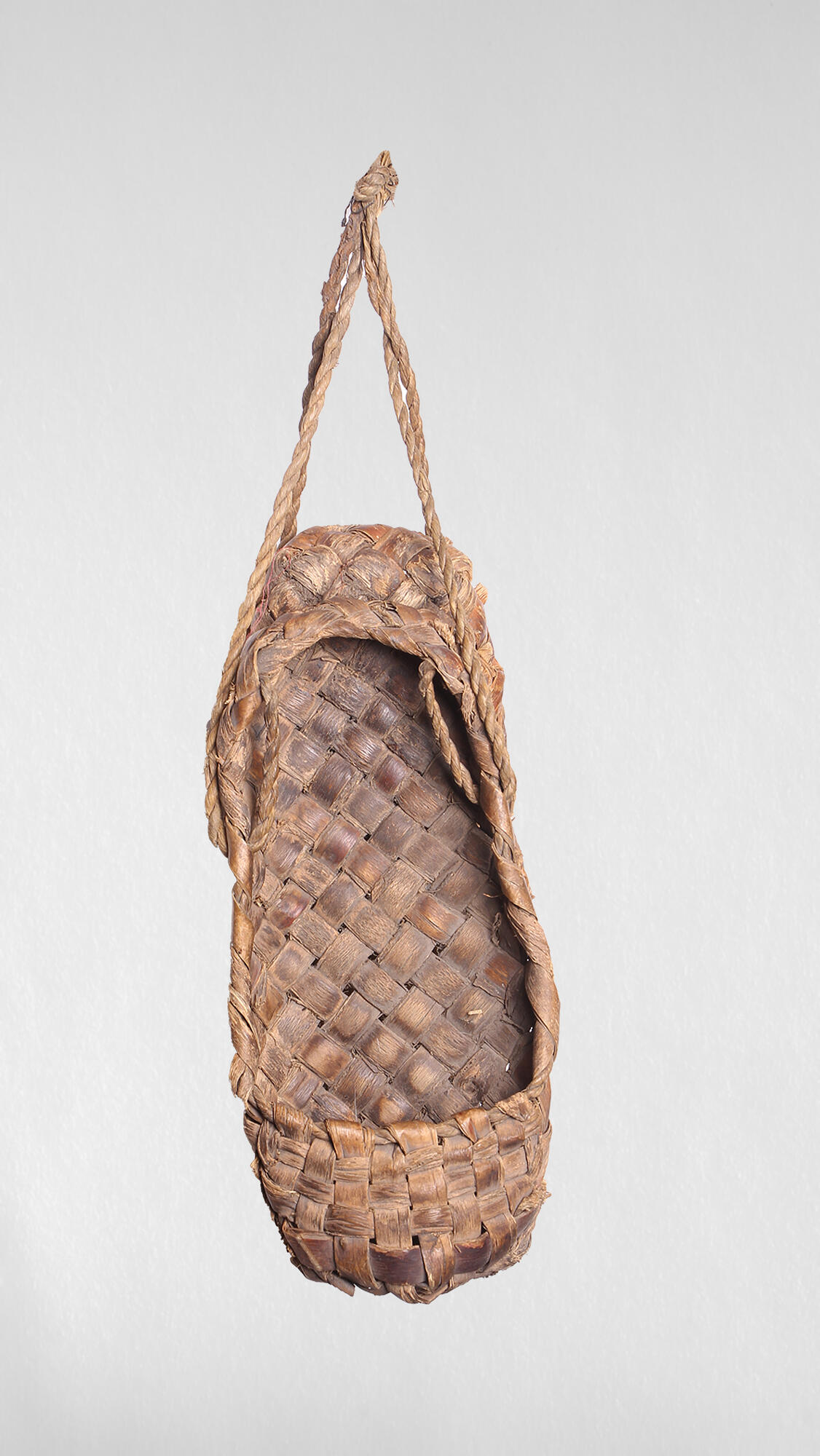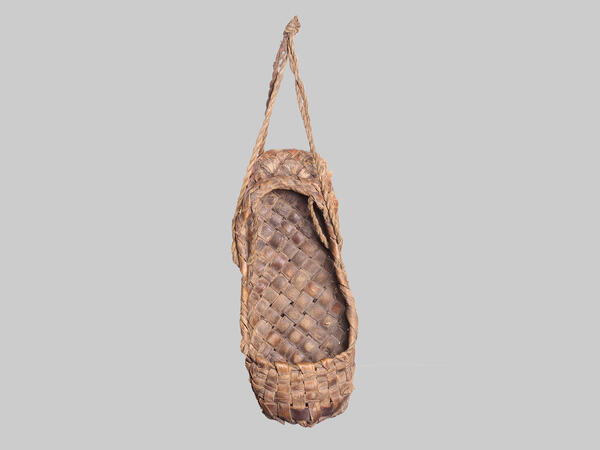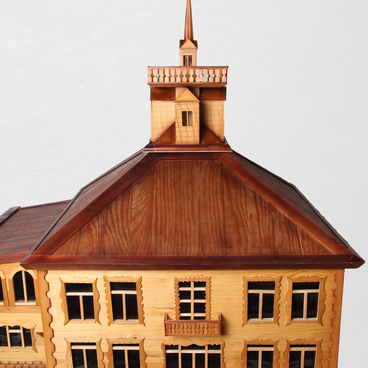One of the first mentions of bast shoes is found in The Tale of Bygone Years (Primary Chronicle), a document created by Nestor the Chronicler in the 1110s. Until the 1930s, bast shoes were popular footwear in Eastern Europe and especially in rural areas.
Bast shoes, similar to those in the museum’s collection, were made using the technique of oblique weaving from linden bast. This material was harvested in spring or fall: the bark was cut into long strips, rolled up, and kept dry in the entryway or in the attic. Before weaving, the bast was soaked in water for 24 hours or steamed in an oven.
Six prepared strips were used to form the basis of the bast shoe — weaves, it was woven from heel to toe. When the shoe head was ready, the bast was pulled on a special shoetree and then, the sides were woven — “ushniki”, as well as fastenings for latchets — “zapyatniki”. For durability, the sole was levered up with a second layer of bast. For this, a tool was used — a flat curved awl — “kochedyk”. Both bast shoes were usually weaved using one shoetree, and therefore in a pair, the left bast shoe did not differ from the right one. Finished shoes were cut from the shoetree and tapped to straighten the weaving and shape the bast shoe.
On average, one pair of bast shoes was worn for one or two weeks, so they were made for future use for several dozen: a peasant wore out from 50 to 60 pairs per year. If the sole was rubbed, it was repaired by picking it again with a kochedyk. Usually, bast shoes were worn with footwraps, and they were attached to the leg with latchets — laces twisted from the same bast as the shoes.
Bast shoes were the shoes of the poorest strata of the population of Russia, since the material for their weaving was available, the technique was simple, and the shoes themselves were practical and quite comfortable to wear. Whole settlements, and sometimes even regions, were engaged in bast shoes weaving.
Since bast shoes have ceased to be used in everyday life, the technology of their manufacture began to be forgotten. Nowadays, bast shoes are weaved only to order, most often for members of folklore ensembles or as souvenirs.
Bast shoes, similar to those in the museum’s collection, were made using the technique of oblique weaving from linden bast. This material was harvested in spring or fall: the bark was cut into long strips, rolled up, and kept dry in the entryway or in the attic. Before weaving, the bast was soaked in water for 24 hours or steamed in an oven.
Then, the wide pieces were cut into narrow strips and a top layer of bark was peeled off. About 300 pairs of bast shoes could be made from 40–60 bast bunches, in each there were 50 straws. The weaving speed was different for different craftsmen, but on average, one craftsman could make from two to ten pairs per day.
Six prepared strips were used to form the basis of the bast shoe — weaves, it was woven from heel to toe. When the shoe head was ready, the bast was pulled on a special shoetree and then, the sides were woven — “ushniki”, as well as fastenings for latchets — “zapyatniki”. For durability, the sole was levered up with a second layer of bast. For this, a tool was used — a flat curved awl — “kochedyk”. Both bast shoes were usually weaved using one shoetree, and therefore in a pair, the left bast shoe did not differ from the right one. Finished shoes were cut from the shoetree and tapped to straighten the weaving and shape the bast shoe.
On average, one pair of bast shoes was worn for one or two weeks, so they were made for future use for several dozen: a peasant wore out from 50 to 60 pairs per year. If the sole was rubbed, it was repaired by picking it again with a kochedyk. Usually, bast shoes were worn with footwraps, and they were attached to the leg with latchets — laces twisted from the same bast as the shoes.
Bast shoes were the shoes of the poorest strata of the population of Russia, since the material for their weaving was available, the technique was simple, and the shoes themselves were practical and quite comfortable to wear. Whole settlements, and sometimes even regions, were engaged in bast shoes weaving.
Since bast shoes have ceased to be used in everyday life, the technology of their manufacture began to be forgotten. Nowadays, bast shoes are weaved only to order, most often for members of folklore ensembles or as souvenirs.



